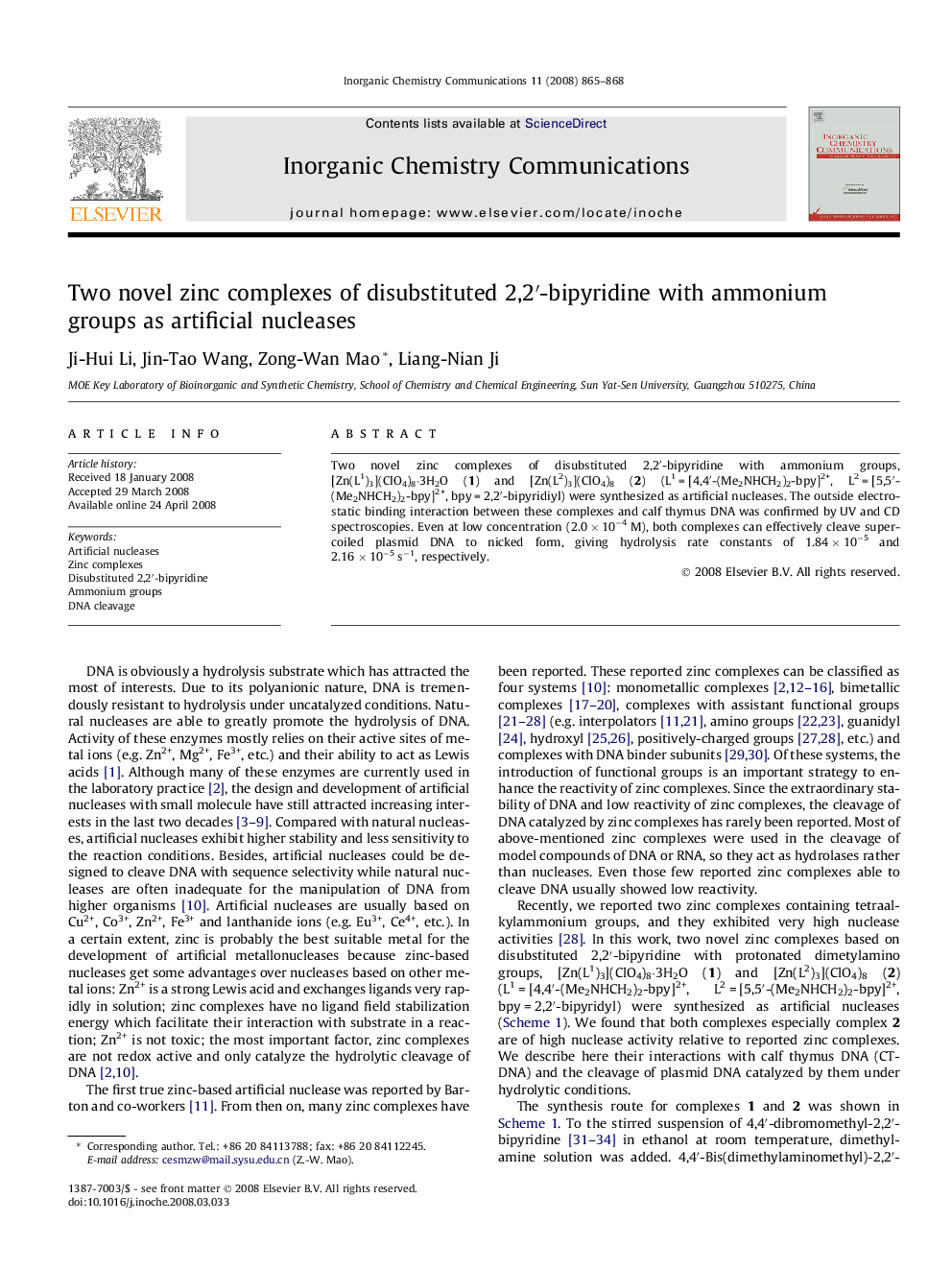| Article ID | Journal | Published Year | Pages | File Type |
|---|---|---|---|---|
| 1302423 | Inorganic Chemistry Communications | 2008 | 4 Pages |
Two novel zinc complexes of disubstituted 2,2′-bipyridine with ammonium groups, [Zn(L1)3](ClO4)8·3H2O (1) and [Zn(L2)3](ClO4)8 (2) (L1 = [4,4′-(Me2NHCH2)2-bpy]2+, L2 = [5,5′-(Me2NHCH2)2-bpy]2+, bpy = 2,2′-bipyridiyl) were synthesized as artificial nucleases. The outside electrostatic binding interaction between these complexes and calf thymus DNA was confirmed by UV and CD spectroscopies. Even at low concentration (2.0 × 10−4 M), both complexes can effectively cleave supercoiled plasmid DNA to nicked form, giving hydrolysis rate constants of 1.84 × 10−5 and 2.16 × 10−5 s−1, respectively.
Graphical abstractTwo zinc complexes with ammonium groups were synthesized and used for the cleavage of plasmid DNA under hydrolytic conditions. Results showed that both complexes can effectively cleave supercoiled plasmid DNA to nicked form, showing quite high nuclease activities.Figure optionsDownload full-size imageDownload as PowerPoint slide
